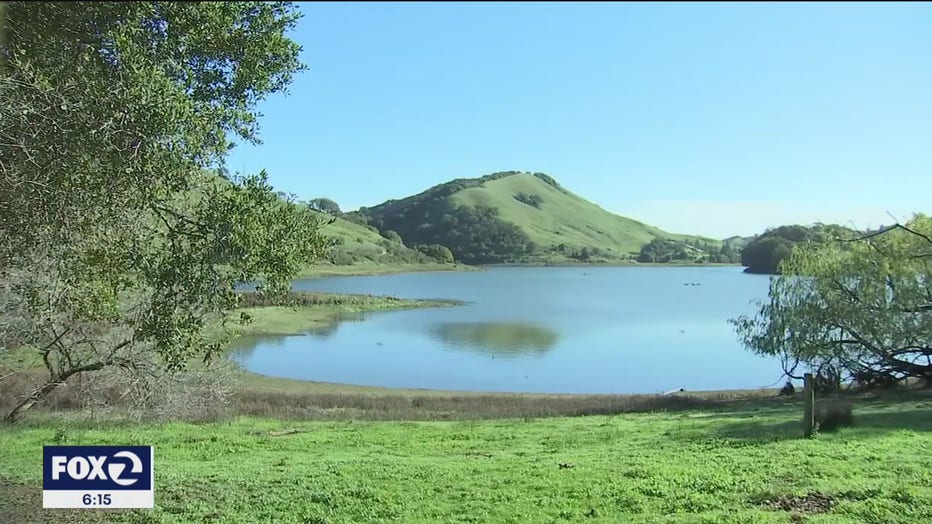Marin's water district reservoirs 106% of normal
Marin's water district reservoirs 106% of normal
On Sunday, Mount Tamalpais and the surrounding towns got more than an inch of rain. Instead of that all being soaked into the parched earth, a lot of it got into the reservoirs of Mt. Tam's watershed. Now, despite three hard drought years, Marin's reservoirs are 106% of their historical average for this date due.
MARIN COUNTY, Calif. -
On Sunday, Mount Tamalpais and the surrounding towns got more than an inch of rain. Instead of that all being soaked into the parched earth, a lot of it got into the reservoirs of Mt. Tam's watershed. Now, despite three hard drought years, Marin's reservoirs are 106% of their historical average for this date due.
It's not just from this weekend's localized rains, but the huge atmospheric river storms that hit Mt. Tam late last year and early this year.
"It's great. It smells good. It looks good. All the animals are really happy. Birds are great," said San Anselmo resident Maria Kennedy. "I'm glad to hear that the wildlife will definitely help too. The more water for them, the better…" said Fairfax Resident Bill Higgins. This is in stark contrast to the rest of the Bay Area and the state.
California's big six reservoirs: Shasta, Oroville, Trinity, San Luis, New Melones and Don Pedro historically should be at their normal end of summer average of 56% full. Instead, they stand at a paltry 33%.

Lake Sonoma, about 60 miles north, of Mt. Tam, is only 30% full when it should be 54. Lake Comanche, a major East Bay Municipal Utility District reservoir in the Sierra foothills should be almost 80% full instead of its current 48%. Lake Folsom, less than 40% full should be 74.
If there is any negative to this, it is that some folks will take this for granted. And, taking water for granted in California, anywhere in California is never a good idea. "Conservation has been huge in Marin County. I think the average citizen is helping out with that and the deputy directors are rally helping out and the young kids in the high schools; they are really into conservation and everything," said Kennedy. Beautiful, like I said, the more water, the better, We need it. Get us out of this drought," said Higgins.
The current national drought map put more than 95% of California in severe, extreme or exceptional drought; making Marin all that more remarkable.

